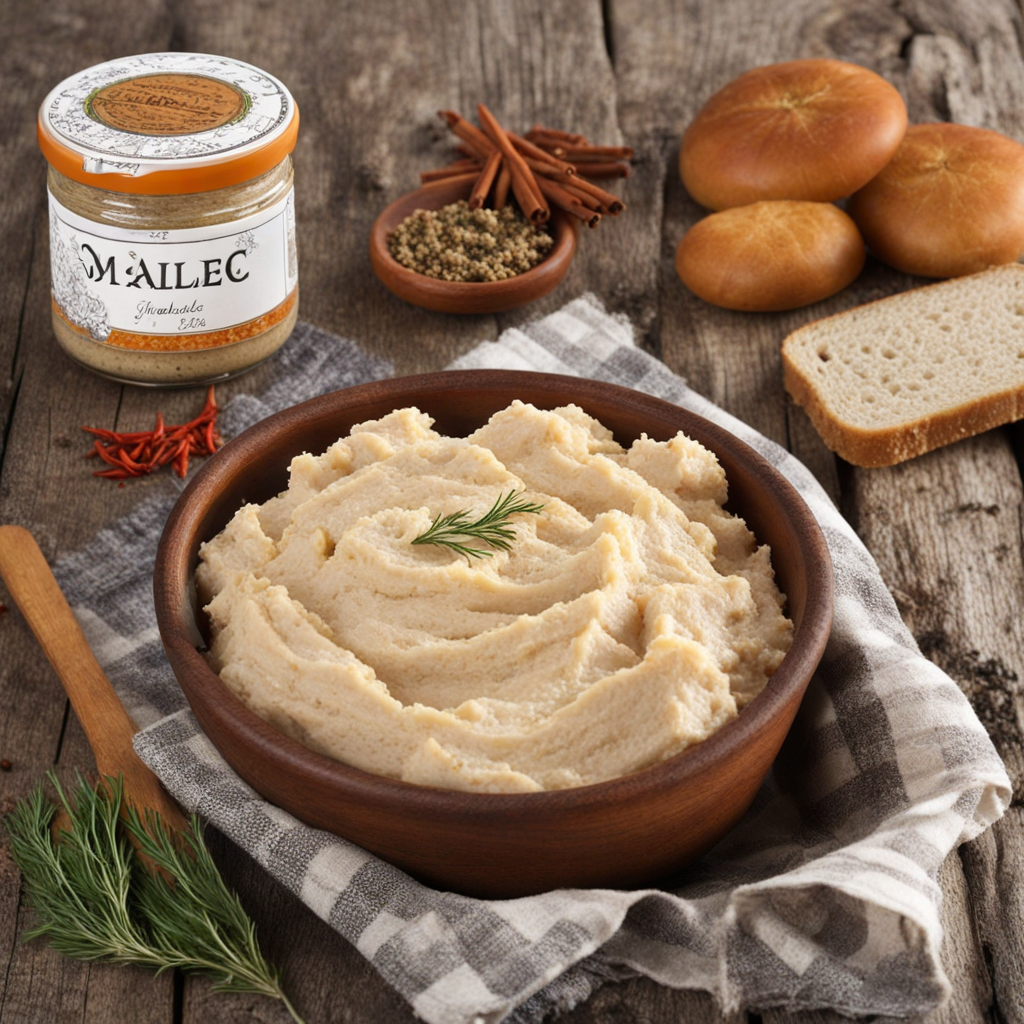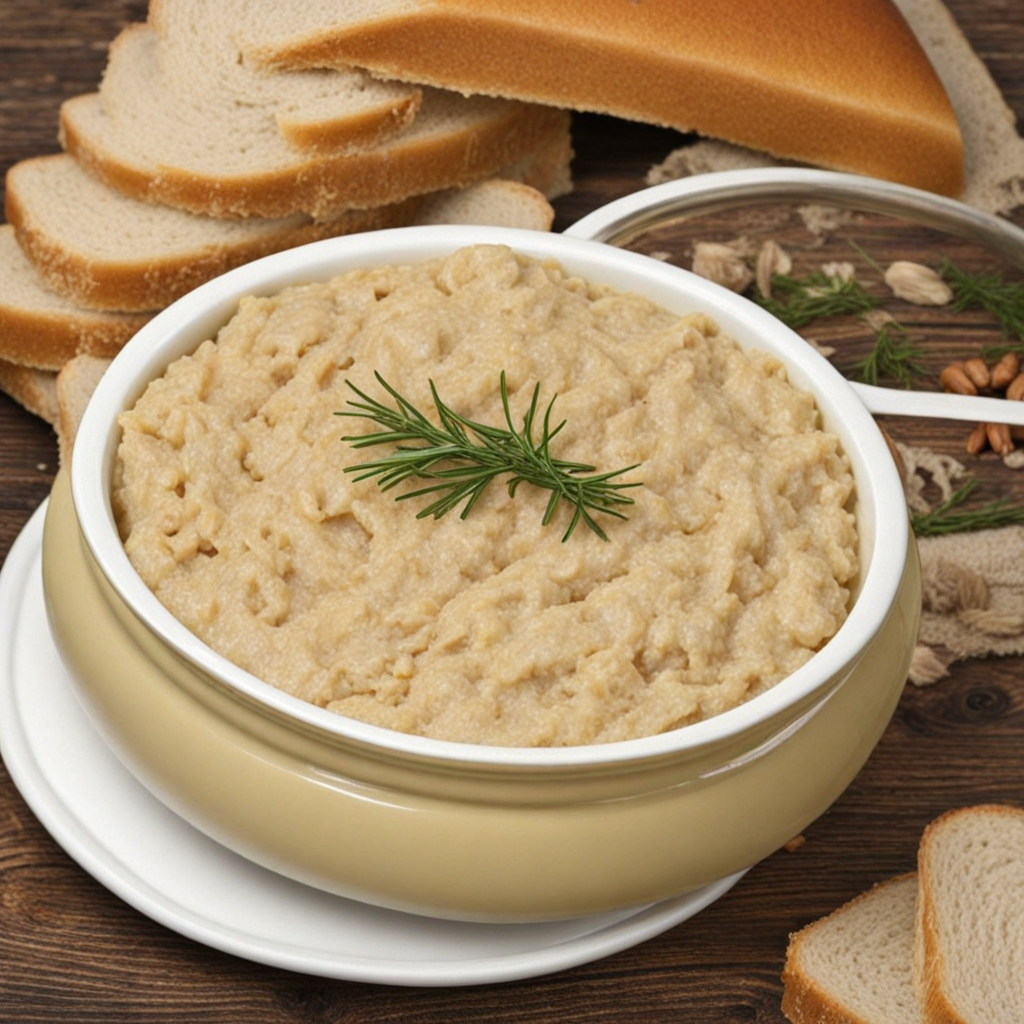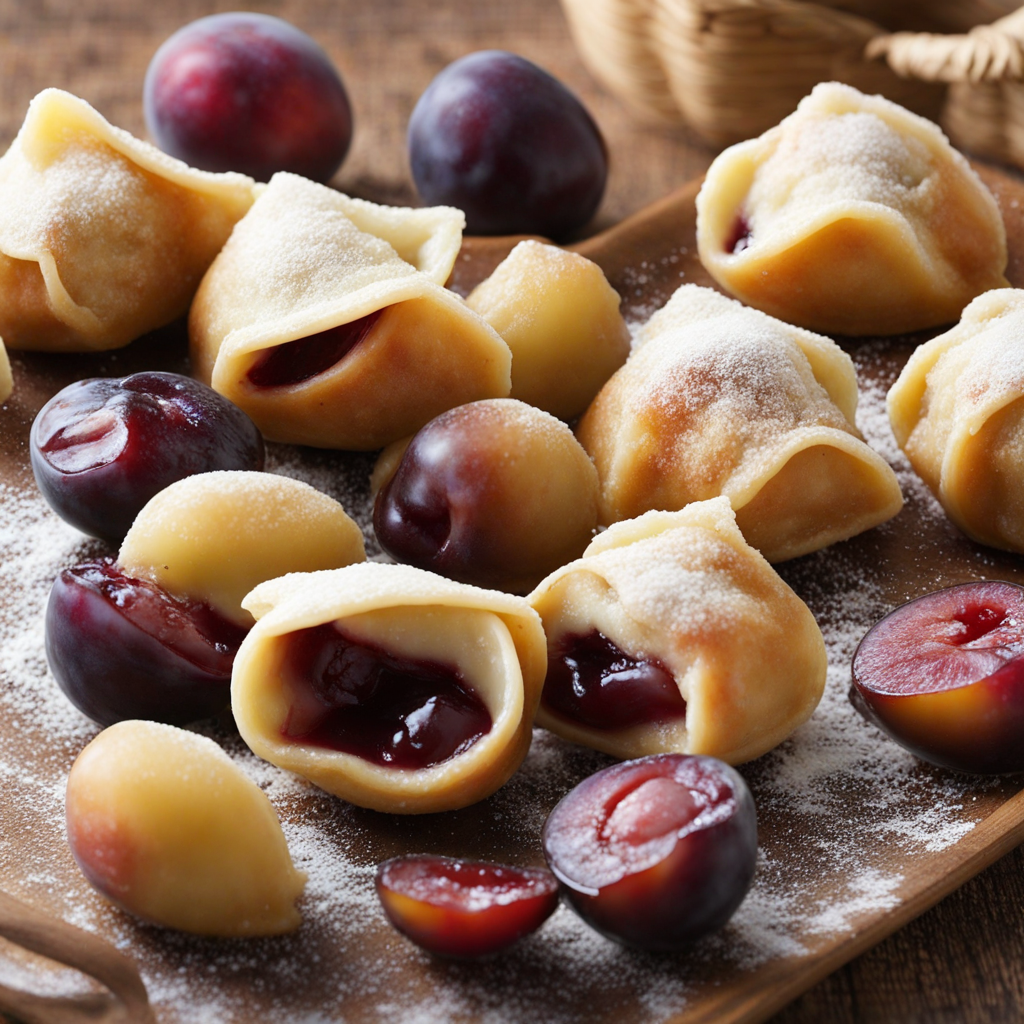Smalec
Smalec is a traditional Polish spread made primarily from rendered pork fat, often accompanied by various seasonings and ingredients that enhance its flavor. The origins of smalec can be traced back to rural Poland, where it served as a means of preserving pork fat in times before refrigeration. Its history is deeply rooted in the resourcefulness of Polish farmers, who utilized every part of the pig during the colder months, ensuring that nothing went to waste. Smalec not only provided sustenance but also became an integral part of the Polish culinary heritage, symbolizing comfort and hearty home-cooked meals. The flavor profile of smalec is rich and savory, characterized by the deep, umami notes of the rendered fat. The spread is often seasoned with ingredients such as onions, garlic, and sometimes spices like black pepper or marjoram, which contribute to its complexity. When prepared with additional ingredients like apples or dried fruits, smalec can have a subtle sweetness that balances the richness of the fat. This combination of flavors makes smalec a versatile condiment, suitable for slathering on fresh bread, serving alongside pickles, or pairing with cured meats. Preparation of smalec involves a straightforward process. The primary ingredient, pork fat, is typically obtained from the back or belly of the pig. The fat is cut into small pieces and slowly rendered over low heat, allowing it to melt and separate from any impurities. This slow cooking process can take several hours, during which the fat becomes
How It Became This Dish
Smalec: A Culinary Legacy of Poland Smalec, a traditional Polish dish, is a type of lard that embodies both the rustic charm of Polish cuisine and the resourcefulness of its people. This flavorful spread, made primarily from rendered pork fat, is steeped in history and cultural significance. Its origins, preparation methods, and evolution reflect the changing tides of Polish society over centuries, making it not just a food item, but a symbol of heritage and resilience. #### Origins of Smalec Smalec's roots can be traced back to the pre-industrial era when pork was a staple in the diets of many European communities, particularly in rural areas. In Poland, the consumption of pork has a long-standing tradition, often linked to agricultural practices and the necessity of using every part of the animal. The method of rendering fat was a practical approach to preserving meat and utilizing resources efficiently. By the Middle Ages, lard was a common cooking fat in many households, not just in Poland but across Europe. Pork fat was favored for its high caloric content and ability to provide energy, especially during long, harsh winters when fresh produce was scarce. Smalec became a means of survival, a way to store fat for cooking and flavoring dishes. The process of making smalec involved slow-cooking pork fat—often from the belly or back—until it melted down and the cracklings were left behind. This method not only preserved the fat but also created a delicious byproduct that would be enjoyed as a crunchy treat. #### Cultural Significance In Poland, smalec is more than just a culinary delight; it has deep cultural roots and significance. It is often served as an appetizer or spread, typically accompanied by freshly baked bread, pickles, and raw onions. This simple yet hearty combination reflects the traditional Polish values of hospitality and communal dining. Smalec is frequently enjoyed during family gatherings, celebrations, and holidays, symbolizing togetherness and the importance of sharing food with loved ones. Moreover, smalec has been associated with rural life and the agrarian lifestyle that has defined much of Polish history. It represents a connection to the land and the self-sufficiency of Polish farmers who relied on their livestock for sustenance. The making of smalec was often a communal affair, where families would gather to render the fat, share stories, and pass down recipes through generations, preserving not only the dish but also the bonds of family and tradition. As Poland underwent various political and social changes over the centuries, smalec remained a constant in the culinary landscape. It was particularly significant during times of hardship, such as during World War II, when food scarcity made traditional recipes a means of survival. Smalec provided nourishment and comfort, reminding people of their roots and the culinary traditions that had sustained them through adversity. #### Development Over Time The development of smalec has evolved alongside changes in Polish society and cuisine. In the early 20th century, as urbanization began to reshape the Polish landscape, traditional foods like smalec experienced both challenges and adaptations. The rise of industrial food production led to the availability of processed fats, which changed the way people viewed and consumed cooking fats. However, many Poles continued to embrace traditional methods of food preparation, leading to a resurgence of interest in artisanal and homemade products. In recent decades, there has been a renewed appreciation for traditional foods, including smalec, as part of Poland's culinary heritage. This revival is often linked to a broader movement towards sustainable eating, where people seek to reconnect with their roots and the land. Many artisanal producers now create gourmet versions of smalec, incorporating various herbs, spices, and even truffles, appealing to modern palates while honoring traditional techniques. The rise of global culinary influences has also impacted the way smalec is perceived and enjoyed. While still considered a staple of Polish cuisine, smalec has found its way onto modern restaurant menus, where it is reimagined in creative ways. Chefs are experimenting with flavor profiles, pairing smalec with contemporary ingredients and dishes, thus bridging the gap between traditional and modern cuisine. #### Smalec Today Today, smalec is celebrated not only as a nostalgic reminder of the past but also as a versatile ingredient in modern cooking. It is often used in various dishes, from savory pastries to hearty stews, showcasing its adaptability in the kitchen. As Poland continues to embrace its culinary heritage, smalec remains a beloved item, reflecting the nation’s identity and cultural pride. The preparation of smalec varies from region to region, with each area boasting its own unique twist on the classic recipe. Some regions may include additional spices such as marjoram, garlic, or even apple, while others might opt for a more straightforward approach. The differences in preparation methods highlight the diversity of Polish cuisine and the importance of local ingredients. Furthermore, smalec's role in Polish cuisine has been amplified by the global fascination with traditional foods and artisanal cooking. Food enthusiasts and chefs alike are drawn to the authenticity and depth of flavor that smalec brings to the table. As a result, it has transcended its humble origins, garnering attention not only within Poland but also on international culinary stages. #### Conclusion Smalec is more than just a spread; it's a testament to Poland's rich culinary history, cultural significance, and the resilience of its people. From its humble beginnings as a means of preservation to its modern interpretations in gourmet cuisine, smalec embodies the heart and soul of Polish gastronomy. As it continues to evolve, it remains a cherished symbol of tradition, community, and the enduring connection between food and identity. Whether enjoyed at a family gathering, a festive occasion, or a modern restaurant, smalec will forever hold a special place in the hearts of those who appreciate its history and flavor.
You may like
Discover local flavors from Poland







